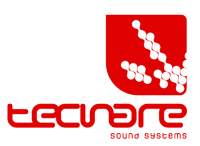Explore the World of Sound
Understanding the Decibel: What Does Sound Pressure Level (SPL) Really Mean?
In the realm of professional audio, the term “decibel” (dB) is ubiquitous. Whether measuring the volume of a live concert, adjusting levels in a recording studio, or assessing the performance of a loudspeaker, decibels are a fundamental unit in sound engineering. However, truly understanding what decibels represent and how they relate to Sound Pressure Level (SPL) can be challenging. In this article, we’ll break down the concept of decibels, their relationship to sound pressure, and their application in professional environments
What is a Decibel?
A decibel (dB) is a unit of measurement that expresses the ratio between two power or intensity levels. Unlike linear units such as meters or kilograms, the decibel uses a logarithmic scale. This means that each 10 dB increment represents a tenfold increase in sound intensity.
For example:
A 70 dB level (vacuum cleaner) is 10 times more intense than 60 dB (normal conversation).
An 80 dB level (heavy traffic) is 100 times more intense than 60 dB.
The logarithmic scale makes it practical to handle the vast range of intensities we experience—from a whisper to the roar of a jet engine.
What is Sound Pressure Level (SPL)?
Sound Pressure Level (SPL) measures the strength of a sound wave at a specific location, expressed in decibels. Essentially, SPL reflects the amount of acoustic energy reaching our ears or a microphone.
The formula for calculating SPL is:
Where:
- P: Measured sound pressure in pascals (Pa).
- Pref: Reference pressure, set at 20 micropascals (20 μPa), the human hearing threshold for the softest pure tone.
How Does SPL Affect Our Perception of Sound?
SPL directly influences how we perceive sound volume. Here’s a quick guide to SPL levels and their impact:
*10 dB: Hearing threshold, nearly silent.
*30 dB: Soft whispers.
*60 dB: Normal conversation.
*90 dB: Heavy traffic, potentially bothersome if prolonged.
*110 dB: Live concerts; prolonged exposure can damage hearing.
*130 dB: Pain threshold; immediate risk of hearing loss.
Systems like Tecnare’s CLa21PLUS, with a continuous SPL of 141 dB and a peak of 147 dB, are ideal for live concerts and events requiring high sound pressure levels. However, operating at such levels must be done responsibly to protect hearing and comply with local noise regulations.
SPL in Sound System Design
Understanding and managing SPL is essential when designing sound systems for live events, auditoriums, or commercial spaces. Engineers must strike a balance between delivering impactful sound and maintaining audience safety.
For instance:
- The IBZA Series, such as the IBZA12, provides excellent SPL output for small to medium venues, ensuring clarity and coverage.
- Subwoofers from the SW Series, like the SW218V, deliver powerful low-frequency SPL, making them ideal for clubs or open-air events.
- Amplifiers like the TDAP Series offer DSP control, enabling precise SPL adjustments to meet environmental and regulatory requirements.
Measuring SPL in Practice
Sound engineers use tools such as sound level meters or spectrum analyzers to measure SPL in a space. A typical approach to evaluating and adjusting SPL for an event includes:
- Initial Measurements: Before the event, measure SPL at various points in the venue to establish a baseline.
- Real-Time Monitoring: Continuously monitor SPL during the event to ensure it stays within permissible limits, especially in outdoor festivals or residential areas.
- Speaker Optimization: Use DSPs, like those in Tecnare’s T Series amplifiers, to adjust levels and smooth frequency responses, avoiding distortion or frequency peaks.
Tips for Maintaining Appropriate SPL
- Use equalizers and compressors to manage levels and prevent volume spikes.
- Distribute loudspeakers evenly throughout the venue to ensure optimal coverage and avoid hotspots of excessive sound pressure. The Array Series excels in providing uniform SPL distribution in large-scale applications.
- Conduct pre-event sound checks using simulation tools like EASE Focus to optimize system design and SPL coverage.
Practical Example: Adjusting SPL for a Live Concert
Let’s consider a live concert setup in a nightclub using Tecnare’s SW Series subwoofers and IBZA Series full-range speakers. Here’s a simplified workflow:
- Pre–Planning: Utilize acoustic simulations to determine optimal speaker placement and calculate SPL distribution across the venue.
- Initial Setup: During the soundcheck, measure SPL at key locations. Adjust EQ and gain levels to achieve a target SPL of 95-105 dB on the dance floor.
- Real-Time Monitoring: Use a sound level meter throughout the event to ensure SPL does not exceed 110 dB, the recommended limit for safe listening.
- Fine-Tuning: Leverage DSP settings in amplifiers like the T Series or TDAP Series to address any mid-event adjustments needed for consistent SPL.
Conclusion
SPL is a fundamental concept for sound engineers aiming to deliver high-quality audio while protecting audience hearing. By mastering SPL measurement and adjustment, engineers can create immersive and safe listening experiences.
If you need assistance with an installation or event, our team is ready to provide personalized consultations and free acoustic simulations. Contact us to ensure your next project delivers impeccable sound!
Featured Articles
Explore Other Topics
Acoustic Science
Audio Technology
Sound Design
Music Production
Environmental Acoustics
Psychoacoustics
Audio Engineering
Sound History
Tecnare
Loudspeakers Series
E Series
IBZA Series
V Series
ALIS Series
Array Series
SW Series
KT Series
TANIT Series
CS Series
Amplifiers Series
Digital Processors
Accessories

